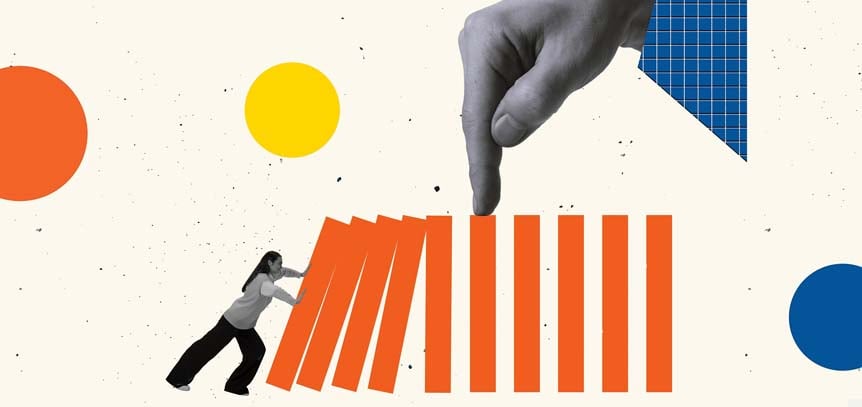
What’s the Marketing Value of Automated Copywriting?
As automated copy takes off, what do marketers stand to gain, or lose, from this emerging technology?
Persado’s announcement, in 2015, that it had raised £21m in funding for its ‘persuasive language generator’ ignited fierce debate, tinged with panic, about the future of copywriting. With its home page making the bold claim that “Persado’s cognitive content outperforms man-made messages 100% of the time”, there doesn’t seem to be much room for doubt there about how Persado sees the future of copywriting.
Technology thought leader Gartner seems to agree. The top item in its 2016 predictions for smart marketing technology foresees that:
Automated content development technologies will enable content creation based on the reader’s location, higher-velocity authoring, and improved quality, consistency and format of business content through automated editors.
In case you think that automated writing will lack the creative touch, it’s worth noting that five years ago, the prestigious and long-running literary journal of Ivy League institution Duke University accepted for publication a poem which was subsequently revealed to be computer-generated. Here is that poem, entitled “For the Bristlecone Snag”:
A home transformed by the lightning
the balanced alcoves smother
this insatiable earth of a planet, Earth.
They attacked it with mechanical horns
because they love you, love, in fire and wind.
You say, what is the time waiting for in its spring?
I tell you it is waiting for your branch that flows,
because you are a sweet-smelling diamond architecture
that does not know why it grows.
As Thomas O’Neill argued in the wake of the Persado announcement:
The idea of computers outsmarting and outperforming humans is nothing new. Just ask IBM. Back in 1997, the then reigning world chess champion (and still considered by many to be the game’s greatest ever exponent) Garry Kasparov was defeated by the company’s Deep Blue computer.
Computers are here to stay, and we wouldn’t want it any other way. Where would marketers be without the CRM system, for example, to bring together everything we know about every customer? Imagine if we were looking for an event sponsor, and our colleagues were all contacting the same company, each one unaware of what the other was doing. What kind of impression would that create? Besides, every time I go to a marketing conference I’m knocked sideways by the technological expertise of my peers, who demonstrate an astonishing grasp of just about every release of every mobile device in the marketplace. As a profession, we’re pretty enamoured of technology.
Bringing Back the Human Touch
But harnessing the power of technology is one thing. Lying down and letting computers run the show is quite another, as Yahoo-owned Flickr found to its cost last year when it made headlines for the wrong reasons. Its automated auto-tagging system labelled a photo of the entrance to Auschwitz with ‘sport’, and other concentration camp images were tagged as ‘jungle gym’. Meanwhile, Google’s image-recognition program identified two black people as gorillas. Here the damage is a deeply human one, and should trouble us all. Google apologised for its blunder, but marketers need to ask themselves if their business could survive the reputational hit in the way that a giant like Google can.
The history of civilisation is one where humans intertwine endlessly with innovation – from the emergence of agriculture and animal husbandry around 10,000 years ago, to today. Our mental faculties sharpen and grow as we come into contact with tools and technologies. And in that way we develop the capacity to invent the next big thing. People and technologies feed off one another, and they’re impossible to separate – in a chicken and egg sort of way.
The human touch in the business world
In the world of business, even the adoption of automated processes and interactions goes hand in hand with recognition of the value of human input. In contact centres, for example, the advent of the smart agent, voice recognition and other technologies is accompanied by a realisation that the human element of customer service remains as indispensable as ever. Deloitte sees the human adviser as a lynchpin, for example, making sure that customers don’t fall through the gaps in multi-channel service delivery.
More fundamentally, as Deloitte also points out, only a real-life person can provide the warmth and care that is painfully missed as we move away from face-to-face interactions. My heart sinks when I walk into a shop with no assistants on duty. This is happening more and more often, especially first thing in the morning or at a station or airport. It’s a cold and lifeless experience. At times I’d sacrifice that in the interests of price and efficiency (especially at stations and airports) and maybe I’m not always in the mood for small talk, but the technology is often so clunky – compared to the on-the-spot intuition of a more personal service – that it often takes longer to get through.
What’s the problem that automated copy needs to solve for marketers?
Back to marketing, the central challenge that automated copy needs to resolve isn’t one of cost-cutting – although that is always important. No, what we really have to address is the problem of the overcrowded ‘attention economy’ of the web, and how difficult it’s becoming to attract significant volumes of traffic to our content.
If you’re like me, then up to now you’ll have addressed this problem by researching in greater depth for original insight and topicality, personalising communications and conjuring up inventive memes that we hope will make social networks hum. Quality costs, but can be justified if it results in a commensurate level of performance set against an intensely competitive landscape.
As Tech Crunch reported, Persado CEO Alex Vratskides sees the automated approach as a way for “marketers to try out many more versions of a message than they’d get with regular A/B testing (where human copywriters still generate the messages themselves)”. It may create variants that humans might never think of.
The value for marketers in the battle for attention is that this introduces a raft of potent variables into the personalised content mix – including location, user device, and fine-grained positioning in the user journey – with technology that can generate thousands of pathways according to the customer experience.
And if you add a human writer to computer logic and power, then you still get the intuition and empathy that comes from a person who shares the lived experience of the target audience. That has to be a winning combination for high-performing content in a competitive environment.
That is the true marketing value of automated copywriting. We can harness all its power without sacrificing the empathic leaps that only humans can make. Thinking again of that computer-generated poem, we should consider how deeply, or otherwise, it resonates with us. It’s not really saying anything meaningful, after all. It is arranging words in an original way, but is that enough to do what we do, which is to sell products and services in a competitive marketplace?
Someone should ask Persado – did they trust their automated copy platform to write their own homepage, or did they get a human to do it?
Takeaways:
- New automated copywriting technologies seem to be displacing the human author.
- Marketers need to make sure their content competes in a crowded web.
- The key is to draw on the strengths of both technology and the human touch.
Read the latest positioning trends and insights.
Tap into our brand and product positioning, storytelling, and creative expertise to inspire your next strategic move.

